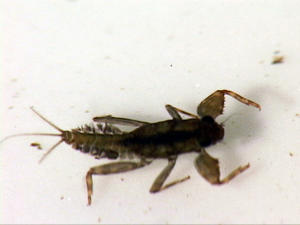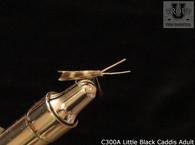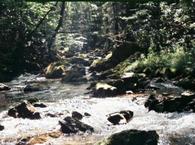
For the first part of this blog series, see Fly Fishing With Nymphs.1 - Clingers.
For the second part of this blog series, see Fly Fishing With Nymphs.2 - Swimmers.
Crawler nymphs, which are the most plentiful nymphs in trout streams overall (though not in faster moving streams), live in the crevices in the rocks, in moderate flows. They don't spend their time in the faster moving water, though they can live in the moderately flowing water of otherwise fast moving streams. They can live in certain areas of riffles and the bottoms of fast runs where they can stay out of the current. Rounder in shape, with short legs and tails, these nymphs can't grab onto the rocks as the clinger nymphs do. Furthermore, they don't require as much oxygen in the water as clinger nymphs, because their gills are typically large. Their eyes are located on the side, rather than the top.
Generally, hatches of crawler nymphs are smaller and more isolated in many streams, occurring only in the slow or moderately flowing water. The flip side of this is that the crawlers can't hide as well as the clinger nymphs, so they are far more vulnerable to the trout when there is no hatch occurring. Because of this, there will need to be a large quantity of these nymphs in a stream to survive in sufficient numbers. During the hatch, the crawlers wriggle their way to the surface, in an almost swimming motion.
Mayfly nymphs are most likely to be crawlers, and they are very common in tailrace fisheries. The downstream portions of freestone streams, which tend to have more slow-moving currents, can also large numbers of them. However, in the upper elevations of freestone streams, where the water runs faster, you will find far fewer of them.
The crawlers do just that - crawl along the bottom in moderate water. They hold on as best they can but stay out of the fast current. They hide behind what ever they can find. Leaves, sticks, rocks, and normally, vegetation which there is little of in the Smokies. You will find more of these in the marginal areas of the fast water and in the pools.





